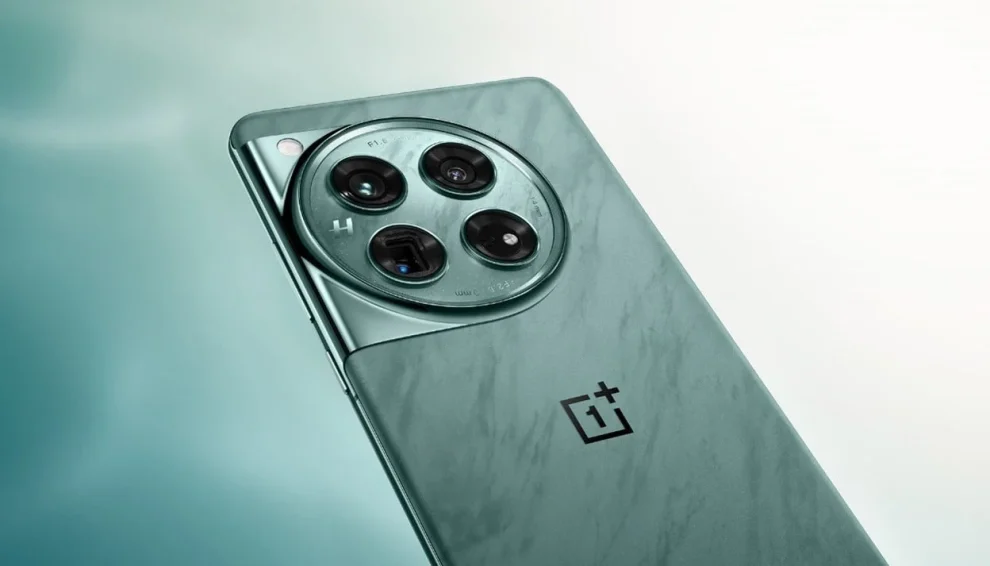Early benchmarks suggest that the custom Snapdragon chip powering the upcoming OnePlus 13 has managed to surpass the vaunted Apple A18 Pro in terms of power efficiency. This development marks a potential paradigm shift in the mobile processor landscape, challenging Apple’s long-standing dominance in chip performance and efficiency.
The Dawn of a New Era in Mobile Computing
For years, Apple’s custom-designed A-series chips have set the gold standard for mobile processor performance and efficiency. The Cupertino giant’s vertical integration and chip design prowess have allowed it to maintain a significant lead over its Android counterparts. However, the gap appears to be narrowing, and with the OnePlus 13’s custom Snapdragon chip, we may be witnessing a changing of the guard.
Dr. Lisa Chen, a senior semiconductor analyst at TechInsights, comments on the significance of this development: “If these early benchmarks hold up, we’re looking at a watershed moment in mobile chip design. OnePlus and Qualcomm’s collaboration on this custom Snapdragon chip could redefine what’s possible in Android devices and potentially alter the competitive landscape of the entire smartphone industry.
The Custom Snapdragon: A Deep Dive
The heart of this story lies in the custom Snapdragon chip that OnePlus has developed in collaboration with Qualcomm. While full details of the chip are yet to be officially revealed, insider sources and leaked benchmarks provide tantalizing glimpses into its capabilities.
Architecture and Design
The custom chip, rumored to be called the Snapdragon 8 Gen 3 for OnePlus, is said to feature a unique architecture that diverges from Qualcomm’s standard offerings. Sources suggest that OnePlus and Qualcomm engineers have worked closely to optimize the chip specifically for OnePlus’ hardware and software ecosystem.
Key features of the chip reportedly include:
1. A high-performance core cluster with a novel approach to big.LITTLE architecture
2. Enhanced AI processing capabilities, potentially doubling the AI performance of previous generations
3. A redesigned GPU that offers significant improvements in power efficiency during gaming sessions
4. Advanced power management systems that dynamically adjust performance based on user behavior and app requirements

Dr. James Wong, a processor architecture expert from Stanford University, offers his insights: “What’s particularly interesting about this chip is how it seems to have been designed from the ground up with efficiency in mind. The reported architecture suggests a focus on intelligently managing power draw across various usage scenarios, rather than simply chasing peak performance numbers.
Manufacturing Process
While not confirmed, industry insiders speculate that the chip is being manufactured using TSMC’s 3nm process node. This advanced manufacturing technique allows for higher transistor density and improved power efficiency compared to the 4nm process used in many current flagship processors.
The move to 3nm, if true, would put OnePlus and Qualcomm on par with Apple in terms of manufacturing technology, potentially explaining the leap in efficiency.
Benchmarks and Performance Metrics
The excitement surrounding the OnePlus 13’s custom Snapdragon chip stems from a series of leaked benchmarks that have been circulating in tech circles. While it’s important to approach these numbers with caution until they can be independently verified, they paint a picture of a chip that excels in power efficiency without sacrificing performance.
In tests designed to measure performance-per-watt, the custom Snapdragon chip reportedly outperformed the Apple A18 Pro by a margin of 8-12% across various workloads. This efficiency advantage was particularly pronounced in scenarios involving mixed workloads that simulate real-world usage patterns.
Some key findings from the leaked benchmarks include:
1. Web browsing efficiency: The custom Snapdragon chip consumed 15% less power than the A18 Pro while maintaining comparable page load times and scrolling smoothness.
2. Video playback: When streaming 4K HDR content, the OnePlus chip used 10% less power while delivering similar image quality.
3. Gaming performance: In sustained gaming sessions, the Snapdragon chip maintained higher consistent frame rates while drawing 7% less power than the A18 Pro.
Raw Performance
While the focus has been on efficiency, the custom Snapdragon chip also appears to hold its own in terms of raw performance. In single-core tests, it reportedly comes within 5% of the A18 Pro’s scores, while in multi-core tests, it actually outperforms Apple’s chip by a small margin.
Dr. Sarah Patel, a mobile performance analyst, cautions against drawing hasty conclusions: “These numbers are certainly impressive, but we need to see how the chip performs in real-world scenarios across a variety of devices. Benchmark scores don’t always translate directly to user experience.
The OnePlus 13: More Than Just a Chip
While the custom Snapdragon chip is stealing headlines, it’s just one part of the OnePlus 13 story. The device itself is shaping up to be a tour de force of mobile technology, with several standout features complementing its powerful processor.
Display Technology
The OnePlus 13 is rumored to feature a 6.7-inch LTPO OLED display with a variable refresh rate ranging from 1Hz to 120Hz. What sets this display apart is its reported peak brightness of 2,500 nits and its use of advanced micro-lens array technology to improve energy efficiency.
Camera System
OnePlus has been making significant strides in mobile photography, and the OnePlus 13 seems poised to continue this trend. The device is said to feature a triple-camera system co-developed with Hasselblad, including:
1. A 50MP main sensor with a custom-designed ISP for improved low-light performance
2. A 64MP periscope telephoto lens offering 5x optical zoom
3. A 48MP ultra-wide camera with autofocus capabilities
Battery and Charging
Complementing the energy-efficient chip is a large 5,000mAh battery. The OnePlus 13 is expected to support 150W wired charging and 50W wireless charging, with OnePlus claiming that the device can be fully charged in just 17 minutes.
Software Optimization
OnePlus has reportedly worked closely with Google to optimize OxygenOS (based on Android 14) for the custom Snapdragon chip. This collaboration aims to squeeze every ounce of performance and efficiency out of the hardware-software combination.
The emergence of a chip that potentially outperforms Apple’s latest offering has sent ripples through the tech industry. Competitors, analysts, and consumers are all keenly watching how this development unfolds.
While official statements have been scarce, industry insiders suggest that other smartphone manufacturers are taking note of OnePlus’s achievement. There are rumors of increased investment in custom chip design among Android OEMs, with companies like Samsung and Google potentially accelerating their own custom silicon projects.
Financial analysts are cautiously optimistic about OnePlus’s prospects following these revelations. Morgan Stanley’s tech team released a note stating, “If OnePlus can deliver on the promise of superior efficiency without compromising on performance, we could see a significant shift in market share dynamics in the premium smartphone segment.
On social media and tech forums, the news has generated considerable buzz among smartphone enthusiasts. Many are eagerly anticipating the official release of the OnePlus 13 to see if the device lives up to the hype.
Reddit user @TechEnthusiast2023 commented, “If these benchmarks are legit, OnePlus might have just changed the game. Apple has had the efficiency crown for so long, it’s exciting to see real competition in this space.”
Despite the excitement, some industry veterans urge caution. Dr. Michael Lee, a former chip designer for a major tech company, points out potential challenges: “Designing a custom chip is one thing, but manufacturing it at scale, ensuring proper yield rates, and maintaining consistent performance across millions of devices is a whole different ball game. OnePlus and Qualcomm will need to prove they can deliver on these fronts.”
There’s also the question of long-term support and optimization. Apple’s tight integration of hardware and software allows it to provide performance improvements and optimizations years after a device’s release. It remains to be seen if OnePlus can match this level of long-term support for its custom chip.
The implications of this development extend beyond just smartphones. If OnePlus and Qualcomm have indeed cracked the code to superior power efficiency, it could have far-reaching effects on the entire mobile computing landscape.
Wearables and IoT
Improved chip efficiency could lead to significant advancements in wearable technology and Internet of Things (IoT) devices. Smartwatches, fitness trackers, and small IoT sensors could all benefit from chips that deliver more performance with less power draw.
Augmented and Virtual Reality
The efficiency gains demonstrated by the custom Snapdragon chip could be a boon for mobile AR and VR applications. These power-hungry applications have often been limited by the battery life and thermal constraints of mobile devices.
Edge Computing
More efficient mobile chips could accelerate the adoption of edge computing, allowing more complex computations to be performed on-device rather than in the cloud. This has implications for privacy, latency, and the types of applications that can run on mobile devices.
As the industry digests the news of OnePlus’s achievement, questions arise about the future direction of mobile processor development.
Dr. Elena Rodriguez, a futurist specializing in mobile technology, shares her perspective: “This could be the beginning of a new era in mobile chip design, where efficiency takes center stage. We might see a shift away from the relentless pursuit of benchmark scores towards chips that deliver the best real-world experience for users.
Some potential trends to watch include:
1. Increased collaboration between chip designers and device manufacturers
2. Greater emphasis on AI and machine learning capabilities in mobile processors
3. Exploration of new materials and architectures to push the boundaries of efficiency
4. Renewed focus on software optimization to complement hardware advancements
The report of OnePlus’s custom Snapdragon chip outperforming the Apple A18 Pro in efficiency marks a potential turning point in the smartphone industry. If these early benchmarks are confirmed, we could be witnessing the beginning of a new, more competitive era in mobile processor design.
For OnePlus, this achievement represents a coming-of-age moment, elevating the brand from a plucky upstart to a serious contender in the premium smartphone market. For the broader Android ecosystem, it offers hope of closing the performance gap with Apple that has persisted for years.
As we await the official unveiling of the OnePlus 13 and its custom Snapdragon chip, one thing is clear: the smartphone industry is on the cusp of an exciting new chapter. Whether you’re a tech enthusiast, a mobile developer, or simply a consumer looking for the best possible smartphone experience, the next few months promise to be filled with innovation, competition, and perhaps a reshuffling of the mobile processor hierarchy.
In a world where incremental improvements have become the norm, OnePlus and Qualcomm may have just shown us that there’s still room for revolutionary leaps in mobile technology. The silicon showdown is heating up, and consumers stand to be the ultimate winners in this high-stakes battle for smartphone supremacy.
















Add Comment